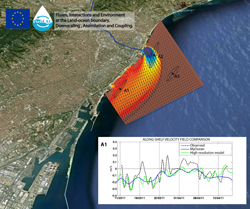Predicting coastal water dynamics and quality
The EU-funded FIELD_AC project was set up to improve operational oceanographic services for coastal areas. The project also sought to generate added value for shelf and regional-scale predictions from Global Monitoring for Environment and Security (GMES) Marine Core Services. Mutual interactions between meteorological and oceanographic processes at coastal scales formed the core of the research. Local study sites were analysed to provide a reliable service that can be transferred to public and private stakeholders. The study sites covered a range of meteo-oceanographic drivers for four geometrically restricted domains: the German Bight, the Catalan coast, the Venice Gulf and Liverpool Bay. Researchers implemented a sequence of coupled and nested meteo-oceanographic models that simulate aspects like wind, atmospheric pressure waves and currents. The results generated more effective, high-resolution simulations to provide highly accurate data to stakeholders. These advances have also supported the establishment of a private company that applies the results in commercial settings in South America, Australia and Europe. FIELD_AC demonstrated that it is possible to achieve reliable, highly detailed predictions of wind, wave, current and transport patterns (sediment and water quality) at the coastal zone (see enclosed figure). This translates into advanced information about the state of the sea, and more efficient actions for reducing risk levels under different circumstances. Better, cheaper predictions have also served to enrich coastal stakeholders with knowledge for decisions that will affect the present and future of coastal societies.



